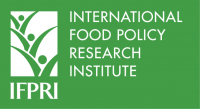Agricultural Production and Changing Prices: The Case of Teff

Smallholder farmers make up over 90 percent of Ethiopia’s agricultural output and thus play a pivotal role in the country’s food production and availability. However, little research has been done regarding how farmers’ production and supply decisions respond to changes in agricultural prices. These supply responses can have significant implications for overall food security.
A new working paper from the Ethiopia Strategy Support Program (ESSP) aims to fill this gap in research, examining smallholders’ supply responses to changes in crop prices and production costs from 2003-2012. The study uses input-output data collected by the Central Statistical Agency (CSA) of Ethiopia through its Annual Agricultural Sample Surveys (AgSS) series; these surveys resample lower level administrative units and households each year, meaning that the surveys are only representative at the administrative-zone level. Thus, the study is based on administrative zone-level aggregated data covering a large number of smallholder farmers (for example, the data covered 50,287 small farmers in the 2004-05 survey and 44,200 in the 2012-2013 survey).
The paper covers four regions (Tigray, Amhara, Oromiya, and the Southern Nations, Nationalities, and Peoples’ (SNNP) Region) that accounted for over 96 percent of the nation’s total agricultural area and output during the study period and looks specifically teff, an important staple crop in the study regions. The study examines how teff prices and the opportunity cost associated with teff production (i.e., the loss of potential gains from producing another grain instead) impact the amount of acreage devoted to teff.
The authors find farmers tend to respond to an increase in teff’s opportunity cost by devoting less land to teff production. If there were a permanent increase of 100 percent in the real revenue per hectare that could be generated by growing non-teff grain crops (barley, maize, sorghum, and wheat), the authors estimate that farmers’ demand for teff acreage would decline by about 50 percent; for a temporary increase of the same amount, teff acreage would fall by 90 percent.
However, the study finds that in reality, teff’s opportunity cost grew relatively slowly during the study period. From 2003-2013 for all study regions, the opportunity cost of a hectare of land used to produce teff was an average of 3,660 Ethiopian birr in December 2006 real prices and only averaged annual growth of 8.5 percent. This relatively slow growth could be due to the fact that the four study regions saw a larger increase in real teff prices compared to the real prices of barley, maize, sorghum, and wheat. The long-run teff supply elasticity of about 1.1 obtained from the preferred specification implies that farmers’ teff supply response increases slightly faster than the increase in the real teff price.
The faster growth in teff prices, and the subsequent response by farmers to increase teff acreage, may be due to the fact that the crop has become increasingly consumed throughout Ethiopia, particularly in urban areas. Between 2005 and 2010, teff’s share in overall food expenditures increased nationwide by 3.4 percent; during this same period, the share of all other cereals in the country’s overall food expenditure actually declined.
The authors also point out that increases in teff acreage may be due to factors other than price. For example, the Ethiopian government has paid more attention to the crop in recent years, disseminating high-yielding varieties and encouraging improved production methods in order to stimulate productivity. Similarly, changes in how the government interacts with markets, particularly the abolition of government control of input and output markets in the 1990s, have improved agricultural productivity in general. Finally, efforts to improve rural infrastructure have allowed farmers greater access to markets, which has likely also contributed positively to farmers’ supply responses.
Farmers’ planting and supply decisions are clearly informed by a variety of complex factors. Understanding how price movements and government policies can affect these decisions will require ongoing research, but such an understanding is crucial in order to properly support food production in developing countries.
